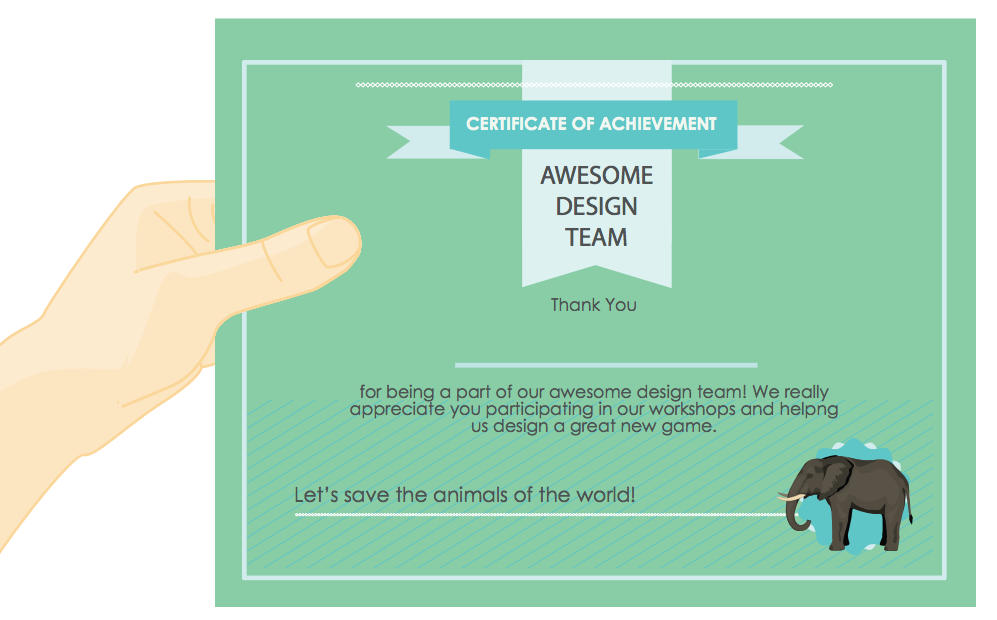House of Animals
AN INTERACTIVE CHILDREN'S LEARNING GAME
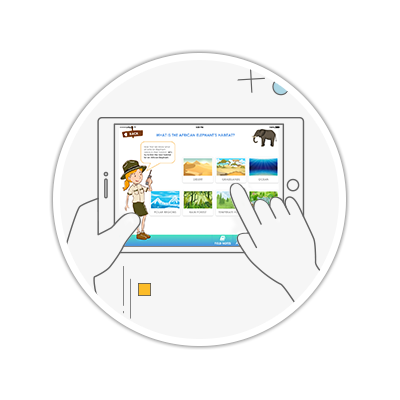
House of Animals
AN INTERACTIVE CHILDREN'S LEARNING GAME
Project Overview
House of Animals is an interactive learning game for children. The game focuses on teaching children about animals and their habitats. I worked on a team with two other women, as part of a Child Computer Interaction course. We were presented with the challenge of designing a childrens learning game by working with a design team consisting of eight children that were between the ages of 7-11 years. Our goal was to research, design, build and evaluate an interactive learning game for children, by children. Over the course of the project our team worked on creating a learning game, while also learning about ethical and safety concerns when working with children.
My Role
Each team member was actively involved with every step of the process. My key responsibilities included conducting workshops, providing materials for the workshops, designing the high fidelity prototype, conducting usability studies with the children and designing our project presentations.
Tools
- Paper Prototyping
- Sketch
- Invision
- Adobe InDesign
- Adobe Illustrator
- Adobe Photoshop
The Process
Over the course of 10 weeks our team recruited children for our design team, conducted interviews with parents and teachers to learn about the children’s technology use and curriculum and we facilitated three workshops. The three workshops focused on brainstorming, prototyping and evaluating.
Workshop 1: Brainstorming
Based on our interviews with the children’s parents and teachers, we decided to focus our efforts on creating a learning game about animals and their habitats. Our first workshop was a brainstorming session, during which our team generated ideas for habitat games. In order to help generate ideas from the children we had everyone participate in a Nominal Focus Group Brainstorming activity. First we had each child write out as many different ideas as they could on Post-its or sheets of paper. Then we had everyone place their ideas on the wall and gave each child an opportunity to present their ideas to the group. As the children explained their ideas we created a list of common themes among the games.
Findings
We found that majority of the children’s ideas fit into three common themes:
- Matching an animal to a habitat
- Reading fun facts about animals and their habitat
- Building habitats for animals
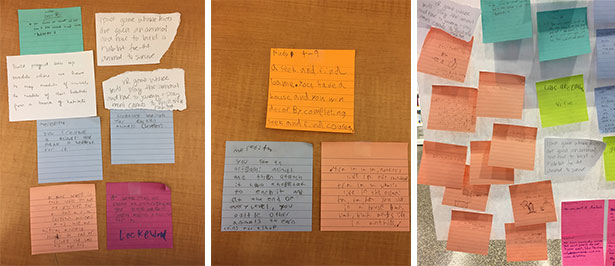
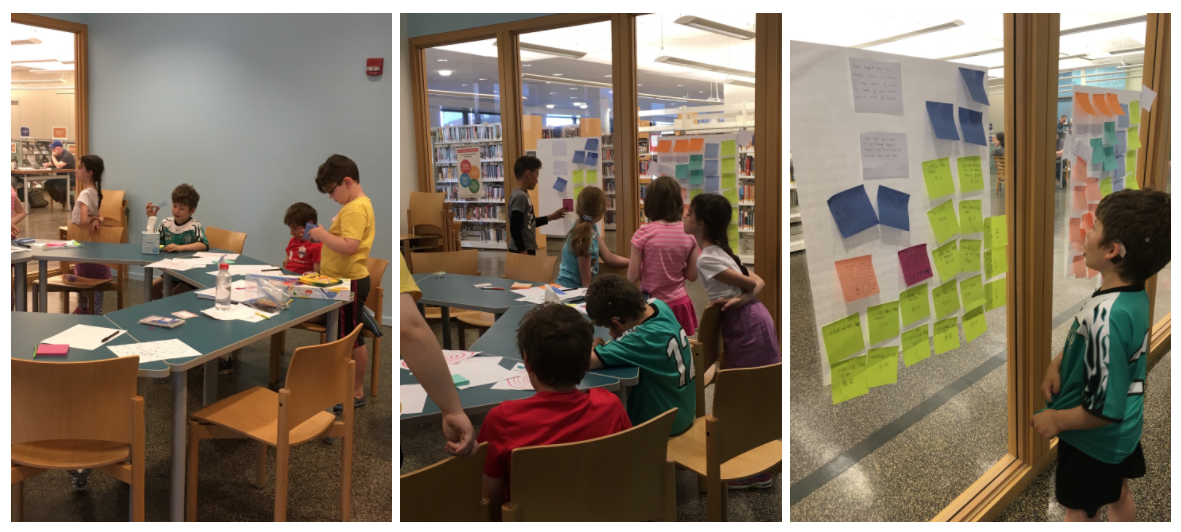
Workshop 2: Prototyping
The second workshop focused on prototyping our team’s game. We kicked off the workshop by explaining our findings from workshop 1 and our idea to create a game that encompassed the three key themes. We talked about how we would work on prototyping the four main screen for our game:
- Selecting an Animal
- Fun Facts
- Habitat Matching
- Building a Habitat
In order to jumpstart the children’s creativity we had them participate in an activity called Layered Elaboration. For this activity, we divided the children up into four teams and each team was given a page to focus on designing. Then after 10 minutes the teams rotated and worked on the next page. The teams drew on transparency paper over the previous team’s work. This allowed the teams to build off one another’s ideas. Each team was given the opportunity to work on the four pages. After the activity we came together as a team and talked about the different ideas.
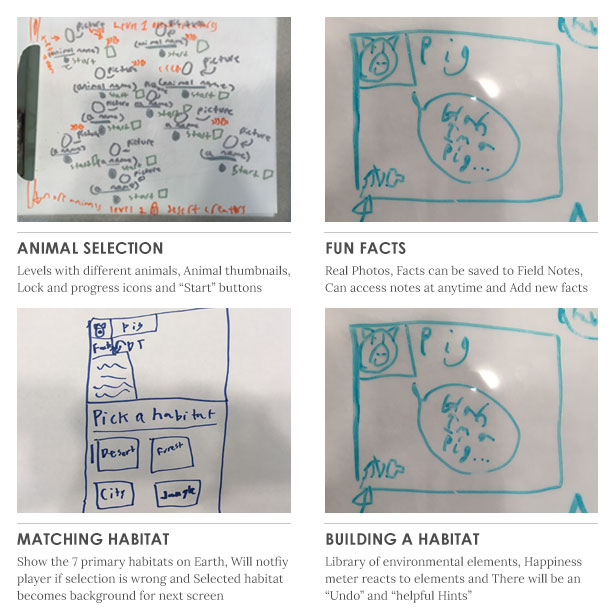
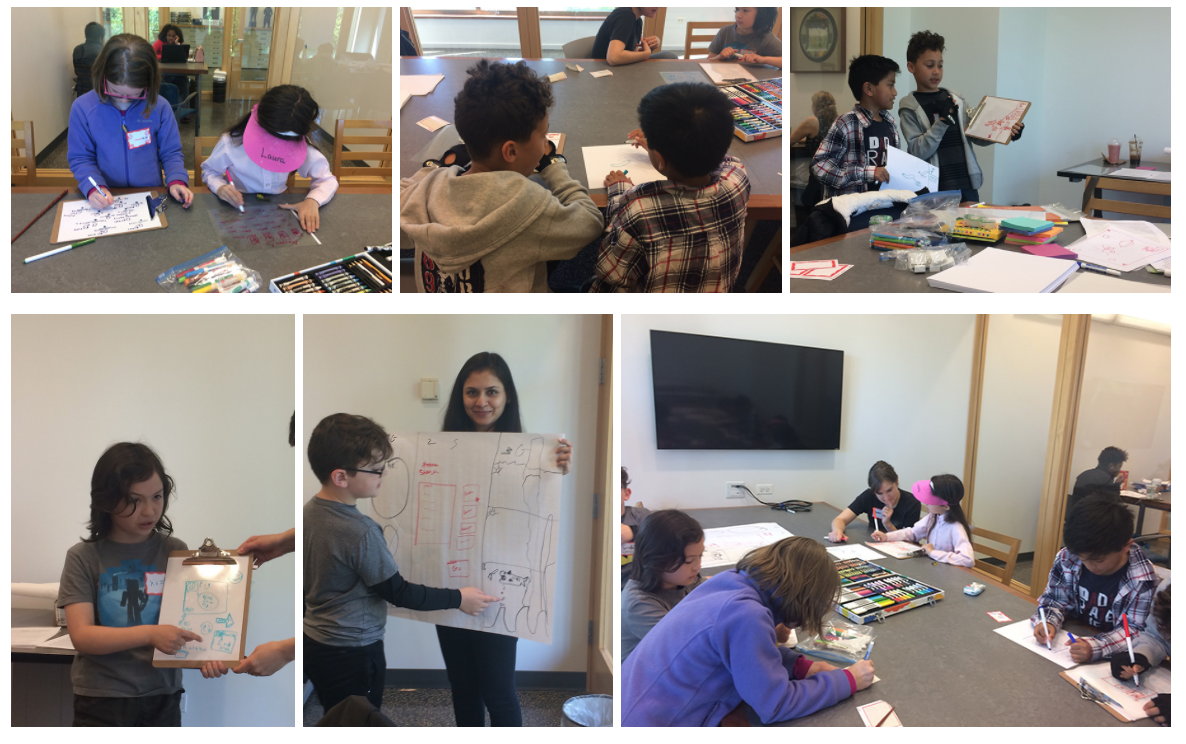
The Prototype
In between workshop 2 and 3 we built an interactive high fidelity prototype based on the children’s designs. We created the various interfaces in Sketch and built a click-thru prototype with InVision. Our prototype revolves around playing the learning game with the African Elephant.
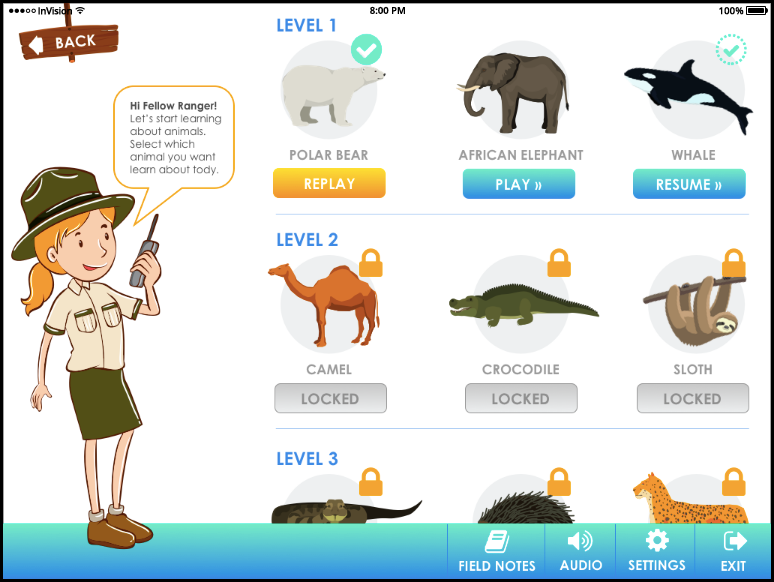
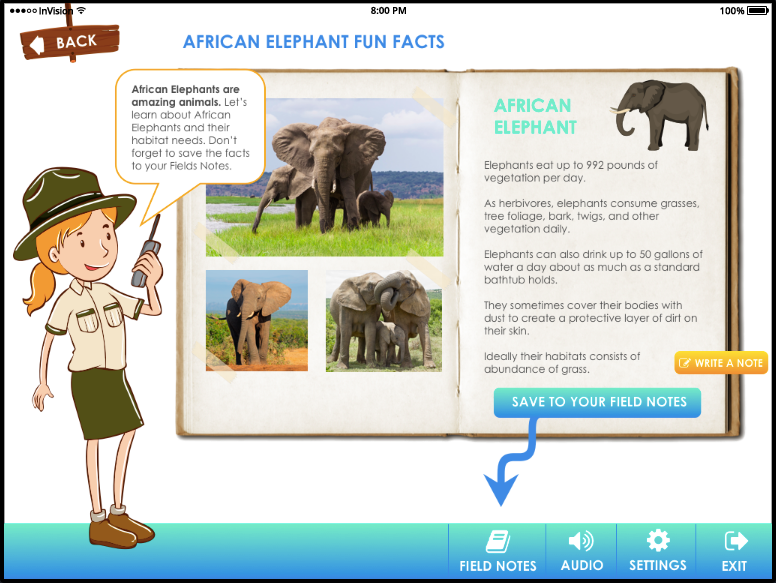

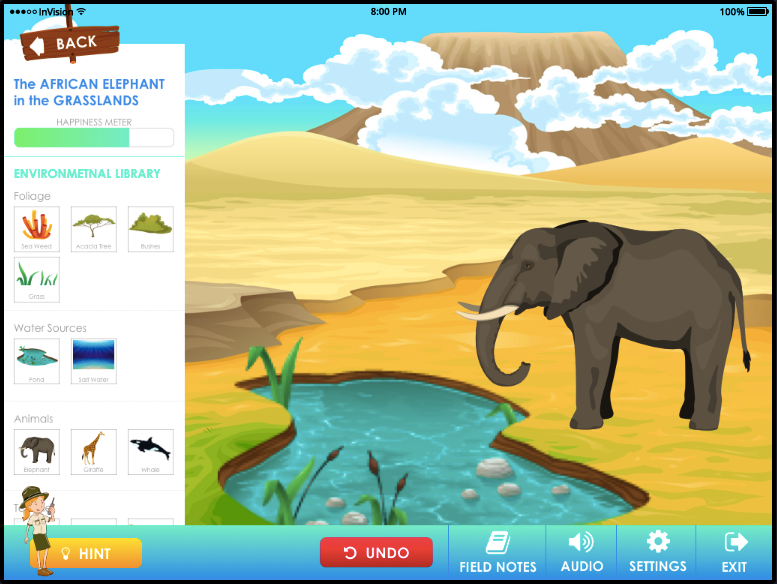
Workshop 3: Evaluating
We used our InVision prototype in workshop 3 to conduct usability tests with our design team. We prepared a usability test script that focused on having the children play House of Animals with the African Elephant as their selected animal. Then we had each child walk through the game to learn about the African Elephant, match the elephant to a habitat and then add helpful and harmful elements to the elephant’s habitat to see how it reacted.
During the sessions we were evaluating the usability, learnability, effectiveness, satisfaction and fun level of House of Animals. We used the following techniques to collect our data:
- Think Aloud
- Durin’s Technique (Stickie Notes)
- Pre and Post Tests about African Elephants
- Fun-O-Meter
- Simley-O-Meter
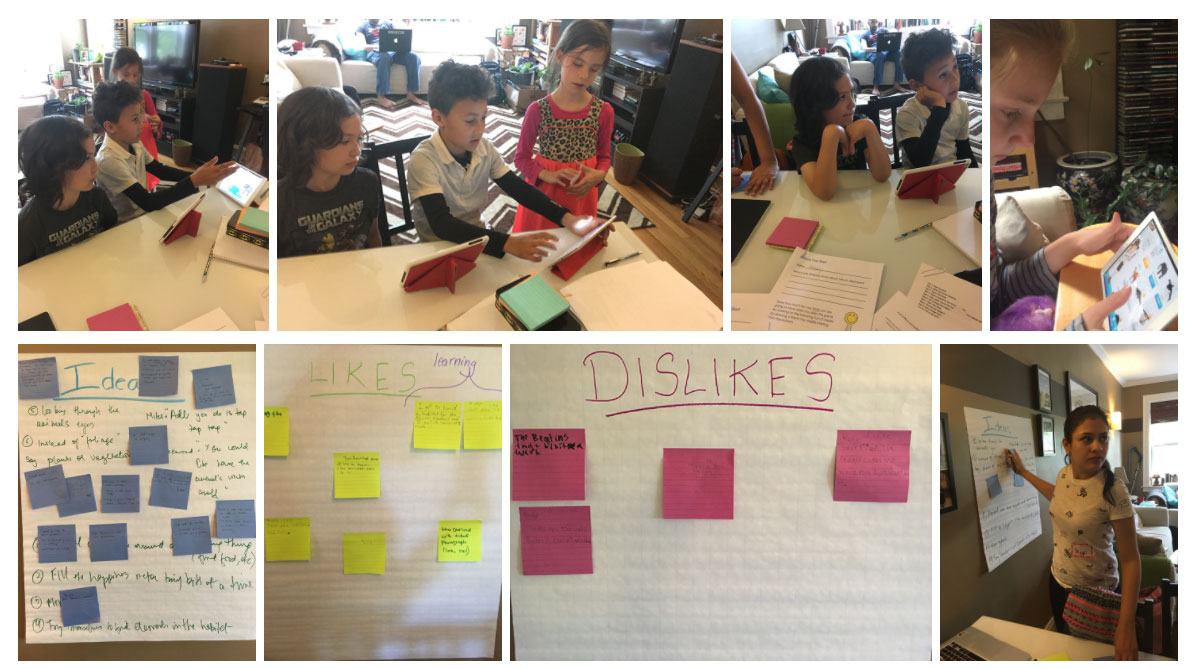
The Outcome
Once the children completed workshop 3 we presented them with a certificate of achievement to thank them for being a part of our design team.
Future Design Implications
- Removal of Misleading Cues
- Reducing the Presence of the Virtual Coach
- Gradual Increments of Happiness Meter
- Ability to Selectively Remove Elements
Working with children was a very enlightening experience. I learned about ethical and safety concerns, as well as new techniques that are geared towards working with children. The children on the design team really opened up my creativity.
